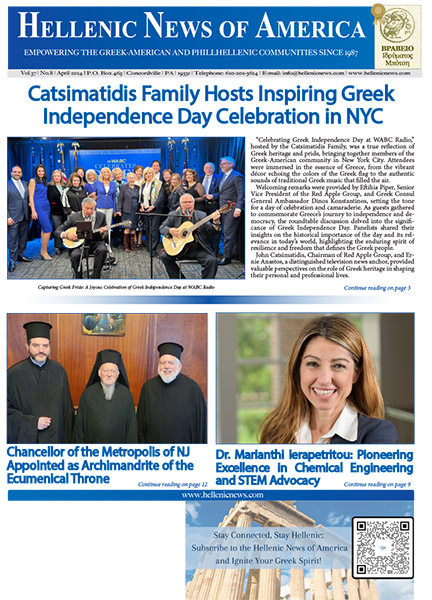Since December 5 is the feast of the great Saint Sabbas the Sanctified, I thought I’d share some things about the Monastery of St. Sabbas in the Holy Land. One of the awesome things about this monastery, among the many awesome things, is that it is also associated with the life of Saint John of Damascus, whose feast we celebrate today on December 4.
—————-
The Monastery of St. Sabbas
Built on the steep slope of the Kedron Valley, in what used to be the heart of the wilderness between Bethlehem and the Dead Sea, the Lavra of St. Sabbas (also called the Great Lavra) is the most important monastery in the Judean desert. It has enjoyed an uninterrupted history of some 1,510 years. Founded by St. Sabbas in 485, after others came to share his life in the wilderness, the monastery has also been the home of many other important Saints of the Church, including: St. John of Damascus the hymnographer and historian, St. John of Kolonia, St. Cosmas the Hymnographer, St. Stephen the Wonderworker, St. Michael Syngelus, St. Theophanes, St. Cyril of Scythopoulos, and St. Theodore of Edessa.
The cave where St. Sabbas spent five years struggling alone can still be seen opposite the monastery towards the east, with an iron grating in the window that has a Cross and the Greek letters “A” and “C” (the initials for “Saint Sabbas” in Greek) worked into it. In need of water, St. Sabbas prayed to God from his cave and saw in the moonlight a wild ass digging in the soul with its hooves. When it had made quite a deep hole, he saw it drink from the hole. St. Sabbas understood that God had sent them water; he dug at the place and found a spring of water that still exists, being neither too abundant in winter nor scarce in summer. This spring is located in a small chapel at the base of the monastery, at the bottom of the ravine.
Another night St. Sabbas left his cave and, while in prayer, saw a pillar of fire on the western slope of the ravine, where his tomb now stands between the two churches. After having continued in prayer in this place until dawn, he found a large and wondrous cave which had the shape of a church. This church is known as Theoktistos (God-built) and is dedicated to St. Nicholas. Some of the murals date to Byzantine times. Along the walls glass cases contain the skulls of the fathers that were martyred in this area. The ancient burial place of the monastery is located under the courtyard where the chapel over the grave of St. Sabbas is found. Depictions of St. Sabbas in the tomb and frescoes of the Saints who were sanctified in the monastery cover the walls of the chapel.
In the ravine to the far right of the cave of St. Sabbas is an enclosure marking the cave of St. John of Kolonia, also called “the Hesychast.” St. John fled his Episcopal throne and, hiding his rank, asked for admission into St. Sabbas’ monastery. After many years, St. Sabbas took St. John to Jerusalem to have him ordained. St. John told the Patriarch privately that he was already a bishop and therefore could not be ordained a priest. The Patriarch told St. Sabbas that he could not ordain the man and sent them home. Crushed by this unexpected impediment, St. Sabbas prayed and the matter was revealed to him, whereupon he loved and honored St. John greatly. After the death of St. Sabbas, St. John strengthened the faith of the brothers when the region was raided by barbarians. The Church celebrates his memory on December 3/16.
As the lavra grew and the church became too cramped for their numbers, St. Sabbas built another church beside the cave church. This catholicon was originally dedicated to the Annunciation, but after the repose of St. Sabbas, the Mother of God appeared to the new abbot and requested that it be rededicated in honor of St. Sabbas. In this we see the special love of the Mother of God for St. Sabbas. Every monastery in the Holy Land dedicated its catholicon to the Theotokos in order to combat the heresies of the Origenists, Arians, and Nestorians, which deny the divinity of our Saviour. Without her express approval, the monastery would not have rededicated the church to St. Sabbas. This church now houses the incorrupt relics of St. Sabbas which are a source of miracles for all that turn to him in faith. To the left of the small narthex is another narthex with a fresco of the Akathist Hymn, before which the fathers of the monastery say the Akathist every evening. Compline is held here also.
A chapel incorporating the tomb of St. John of Damascus and his cave cell is found on a different, higher level in the monastery. St. John was an eminent official of the Moslem court in Damascus and a wise apologist for the Orthodox. After an intrigue at court, which caused him to lose his right hand, he entreated the Mother of God and she restored it to its place. St. John then appealed to the caliph to dismiss him from his service so that he might serve God. After giving away all his wealth, he and his adopted brother, St. Cosmas, retired to the Monastery of St. Sabbas. Here St. John was entrusted to the care of a simple elder who did not allow him to write or chant anything, for the sake of obedience and humility. After an incident in which St. John composed a hymn for one of the brothers without a blessing, the elder cast him out of their cell. As an epitemia, St. John cleaned the latrines of the lavra with his hands. Moved by his humility, the elder received him back and, after a vision of the Mother of God, begged St. John to continue to write hymns and treatises for the edification of the faithful. St. John, with the help of his foster brother, St. Cosmas, composed a vast number of hymns, canons, and patristic works, many of which are still in use in the Orthodox Church today. The memory of St. John of Damascus is celebrated by the Church on December 4/17.
The mother of St. Sabbas, St. Sophia, requested that she be allowed to live close to her son. Since he never allowed any woman to enter the monastery, St. Sabbas had a tower built for her, which can be seen to the right of the monastery as one faces the Kedron Valley. Following his example, women are not allowed to enter the monastery, but they are allowed to visit the spring at the base of the monastery by following the path to the right of the courtyard.
Throughout the centuries, the monks living here have been subjected to countless attacks, plunders, and slaughters. Some of the skulls of the martyred fathers can be seen in a deep recess in the cavern church. In order to be given warning of an attack, the monks have placed loose stones on top of the outer walls of the monastery. In the event that someone places a ladder against them, the stones come crashing down, making enough noise to sound the alarm.
Approximately one hundred fifty monks lived in the Lavra at the time of St. Sabbas, and the monastery started to increase after the Persian invasion (614) and the Arab conquest (638). The largest population was seen during the 8th and 9th centuries. In the 19th century the monastery was rebuilt with funds from imperial Russia and reconstructed as a fortress on four levels.
+
Dismissal Troparion of St. Sabbas the Sanctified
Plagal of Fourth Tone (8th)
With the streams of thy tears, thou didst cultivate the barrenness of the desert; and by thy sighings from the depths, thou didst bear fruit a hundredfold in labours; and thou becamest a luminary, shining with miracles upon the world, O Sabbas our righteous Father. Intercede with Christ God that our souls be saved.
+
-From A Pilgrim’s Guide to the Holy Land For Orthodox Christians by Holy Nativity Convent, St. Nectarios Press: Seattle, Washington, 1997.





